Cerulean blue trumpet mushrooms (Craterellus ceruleofuscus) are an edible cousin to black trumpets that are deep blue instead of black. They're just as delicious as any of their cousins.
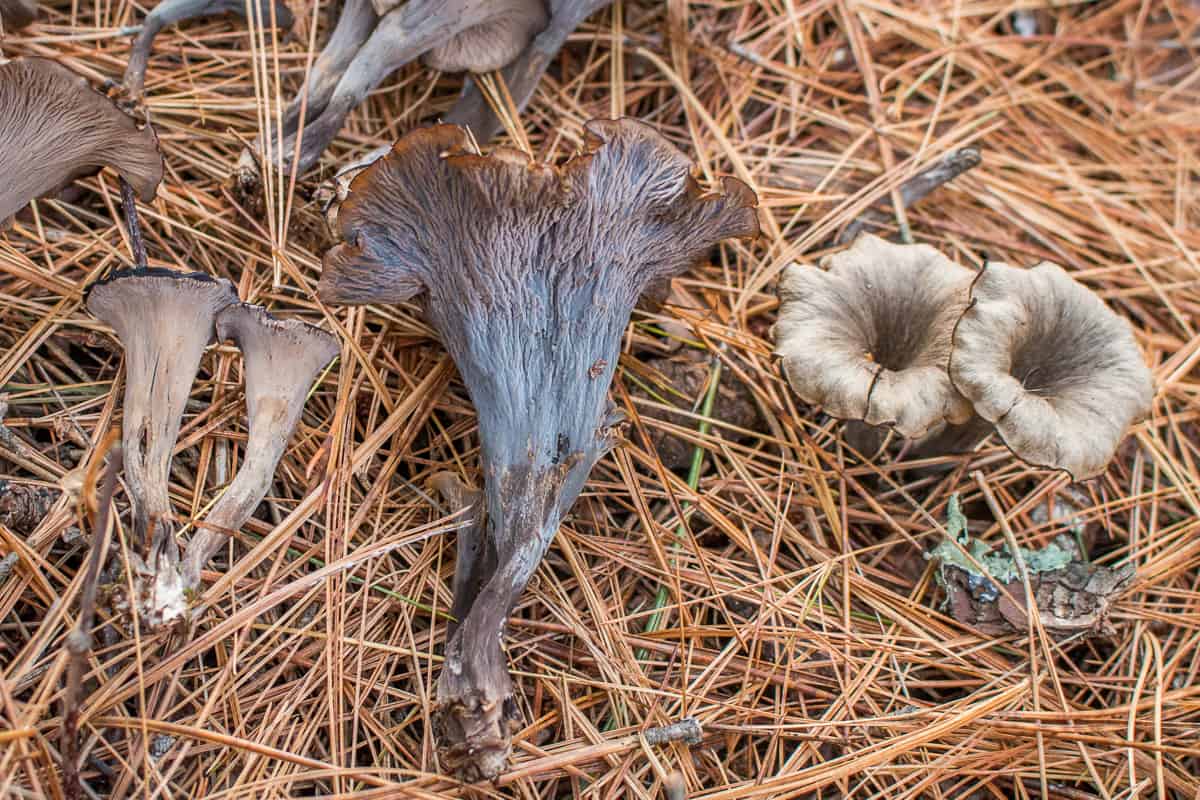
The best part of hunting mushrooms are the random things you stumble across. You might be getting skunked, with not a mushroom to be found, then out of nowhere a pile of somethings jump out to save the day, or, more likely, you just find a fungus that you have no idea what it is, so you throw it back in the woods and keep looking.
On my matsutake hunt last October, I was trying to stay in pure red pine stands in the Chippewa National Forest, but ended up getting into some mixed areas. After a couple hours, and zero matsutake, I spotted a few scattered trumpets here and there. After a while there were a few more, then a good patch--still scattered, and none in the typical clusters of trumpets I'm used to, but with enough concentration to justify sitting down as I picked.
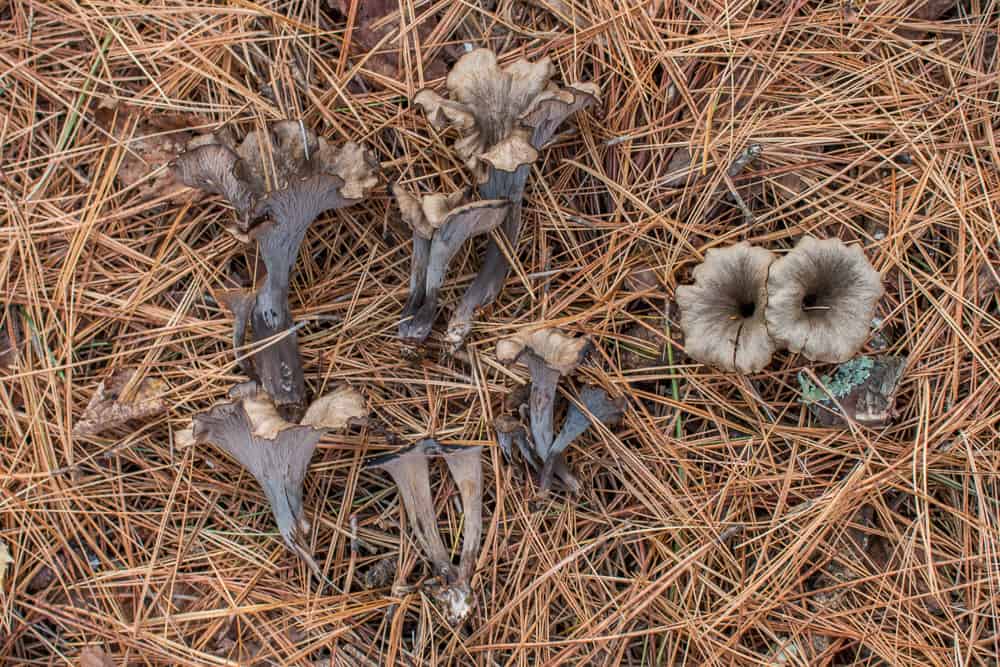
As I snipped and brushed, I noticed these black trumpets were big, bigger than most I pick, with pronounced veins, and a long stem that dipped deep into the pine duff, similar to the Cantharellus enelensis I had picked just feet away. (I'd also never picked trumpets growing with pine). They weren't growing clustered, and they didn't smell super strong like some odorous species of trumpet.
They were big and chunky, too, and basically just made my mushroom Spider-Sense go off. When I got back I looked through the mushrooms, picked out any that I thought looked special, and dried them separately. Either way, I knew if they weren't anything special, at the very least, they'd be delicious.
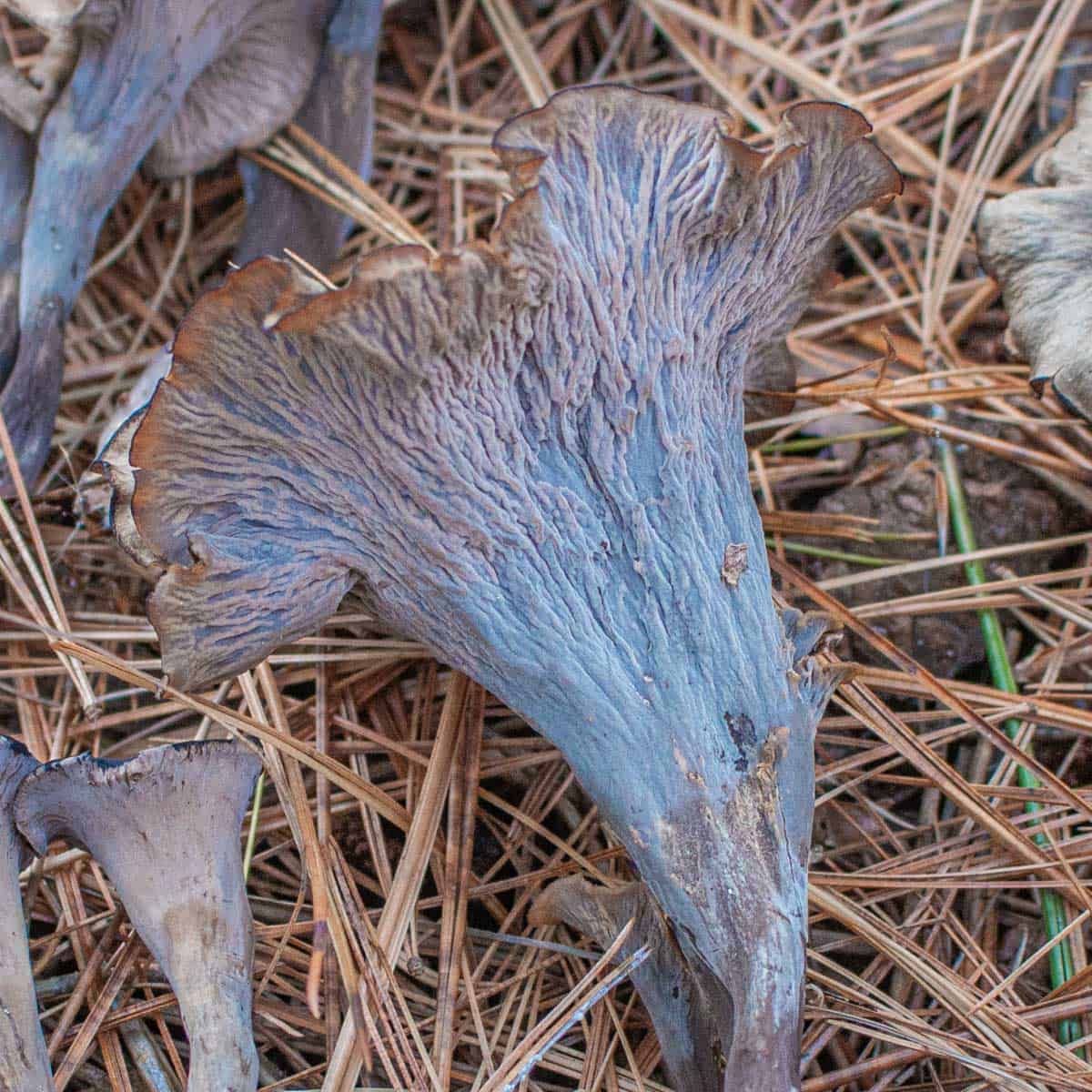
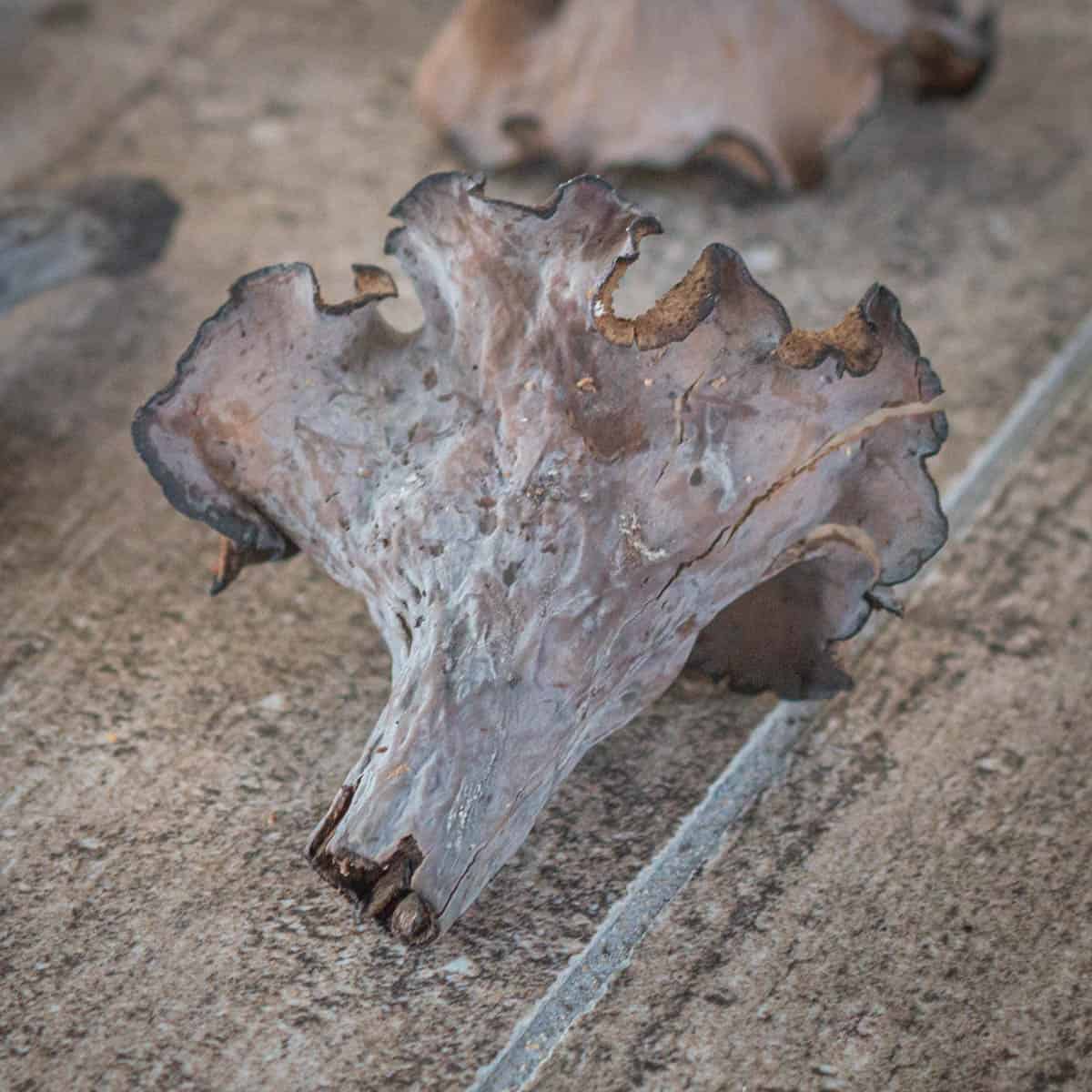
To the naked eye, it was easy to pass over the larger black trumpets when they were fresh, but after drying, they weren't fooling anyone. The larger mushrooms were a noticeable grey compared to the black of their cousins, so I was pretty sure I really didn't know what they were at all, besides a trumpet.
Luckily I have some mycologist friends in Ontario, so I sent some images I took and a few dried samples, and told them what I knew about how and where they were growing. Then I waited, and forgot about them.
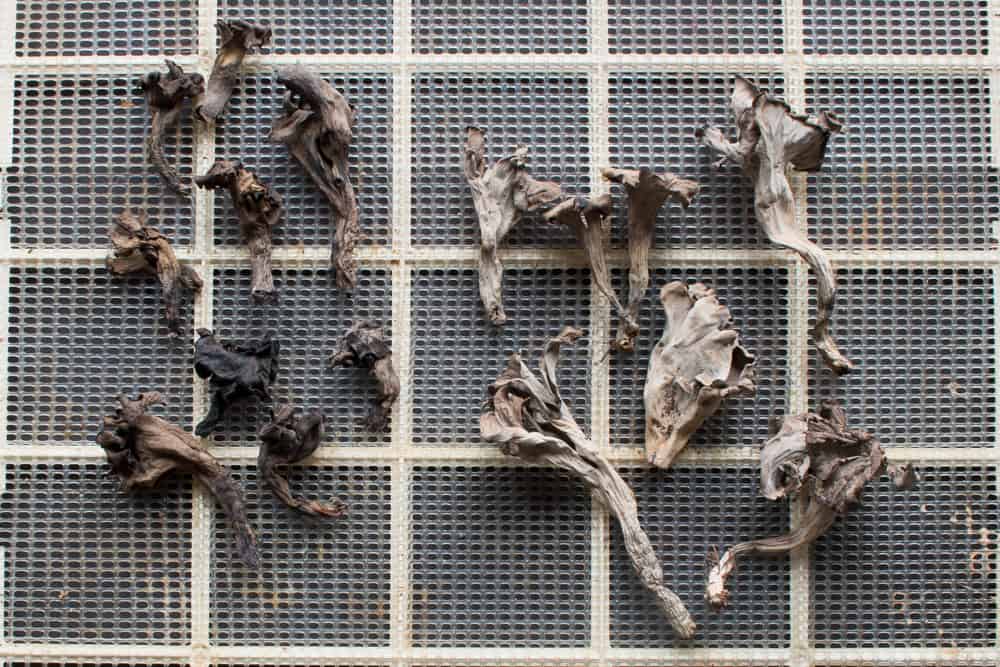
Months later, we got the answer in Craterellus caeruleofuscus. The second part of their name translates roughly to dark blue, or dark cerulean, if you will. Now, when I look at the close up image of the "hero" craterellus in this post, it's pretty obvious that the black trumpet looks blue, but it wasn't at first when they were fresh.
The genetic sequencing matched a few different collections from Florida, North Carolina, and Tennessee, where, if my friend Professor Greg Thorn is correct, they seem to favor growing with Rhododendron, probably with some pine nearby. My specimens were clearly growing with Pinus resinosum (Norway pine/red pine).
They're not documented in David Arora's mushrooms demystified, or any of my other guides I have, but Michael Kuo's key describes them (see below). Mycologist Rob Hallock also mentioned that they're found in the Great Lakes Region, growing with Sphagnum moss, and that it grows scattered to gregarious, but not in dense, clusters.
Just goes to show that you that, to a point, you don't need to have a microscope to understand differences in some mushrooms, a lot of differences can be seen with the naked eye. Trust your instincts.
Further Reading
Mushroom Expert: Chanterelles and Trumpets: Cantharellus and Craterellus (refer to the key)
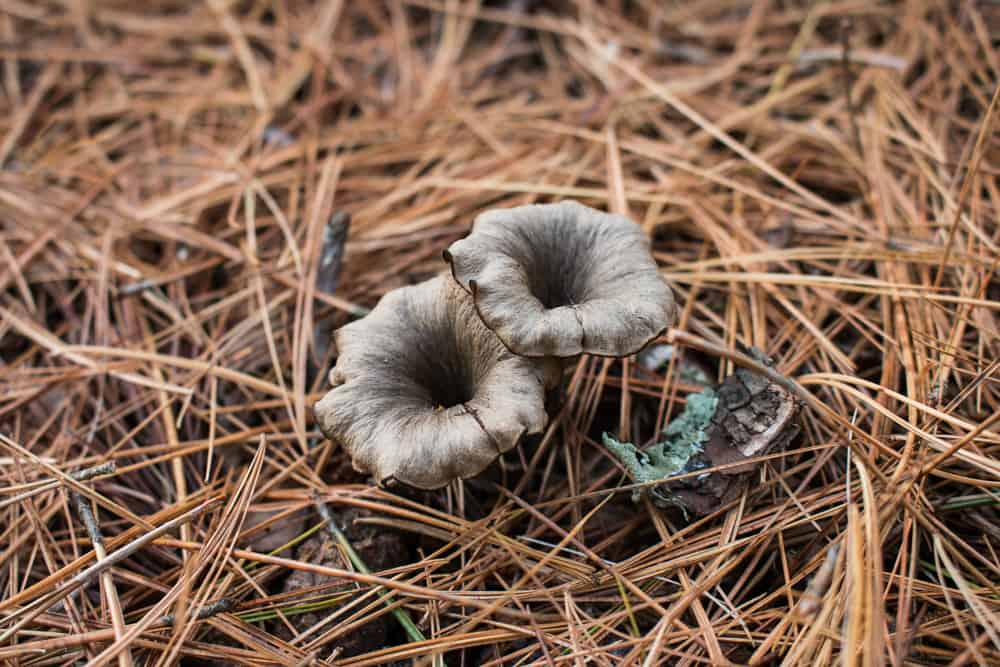

Joseph Miller
Yes. This whole “black trumpet” debate makes my head hurt. I have the iNaturalist app and put images of a trumpet species I thought was Ashen Chanterelles (Craterellus cinereus). Got one verification as such, then recently someone else gave the ID of Craterellus caeruleofuscus. Now I’m confused again. These grow somewhat clustered, around oak and moss, and have an aroma. Oh, and in large numbers. Either way, they’re delicious.
Alan Bergo
Fwiw cerulean trumpets are pretty easy to id for me as they have the blue coloration I’ve never seen on any other type of trumpet. They’re also the only trumpet that grows with pine here in MN and WI.
Carla Beaudet
I can count on both hands the number of C. foetidus I have actually found, and I have always found them growing singly, or two together at most. C. foetidus is also very firm with substantial flesh, not quite the hollow scroll of uniform thin flesh that C. fallax is. That characteristic, plus the wrinkled underside, is what made me draw the comparison. "The professor"...?Kuo? Who's your resident mycologist?
Alan Bergo
Professor Greg Thorn. He and Andrus Voitk named C. enelensis and have their work published in The Journal of Botany. Both are from Canada. Kuo describes foetidus as growing clustered and pale, if I remember, with a strong scent. What I suspect are cinereus have always been singular, heavy and dense, thick stem like a chanterelle. There's an image of all of these on my original post on black trumpets.
Carla Beaudet
It's quite possible I had cinereus rather than foetidus, based on the identifications in your original post on black trumpets. There are only 3 Craterellus sp. listed in the Roody book on the mushrooms of WV and the Central Appalachians, and cinereus isn't one of them. I am guessing foetidus was the closest match I could find. That's a very useful photograph with the three species lined up next to each other. Thanks! I've been to lots of mycology gatherings and just wondered if your prof was someone I knew (but no).
Alan Bergo
Yeah. I've debated those two mushrooms in the picture you're referring to with a couple mycologists over the years only to feel more confused, but I'm glad it helped you to see them next each other, it was a lucky week when I took that shot.
Carla Beaudet
Morphologically, these seem closer to C. foetidus than C. fallax due to the wrinkled underside and the more substantial flesh. I mean, except for the lovely blue cast, that's what I would have pegged them as. But I didn't know there was a C. caeruleofuscus, prior to reading your post. Regarding C. foetidus, the name is undeserved; they do have a sweet pungency when fresh, but it's not repulsive in the least. They look just like your C. caeruleofuscus, but are a uniform dull grey-brown.
Alan Bergo
Thanks Carla. Getting people to agree on what trumpet is what has been driving me nuts. From what I remember, C. foetidus should also grow clustered, and is light colored, but still hollow, besides the veins and the incredible aroma. C. cinereus (what I assume is C. cinereus) should grow singularly, and they're more firm, very firm, like a black chanterelle would be, if that makes sense, and their false gills were more distinct than any trumpet I'd seen. I'm hoping to get a couple of both of these to send the professor next year, along with more albino chants.